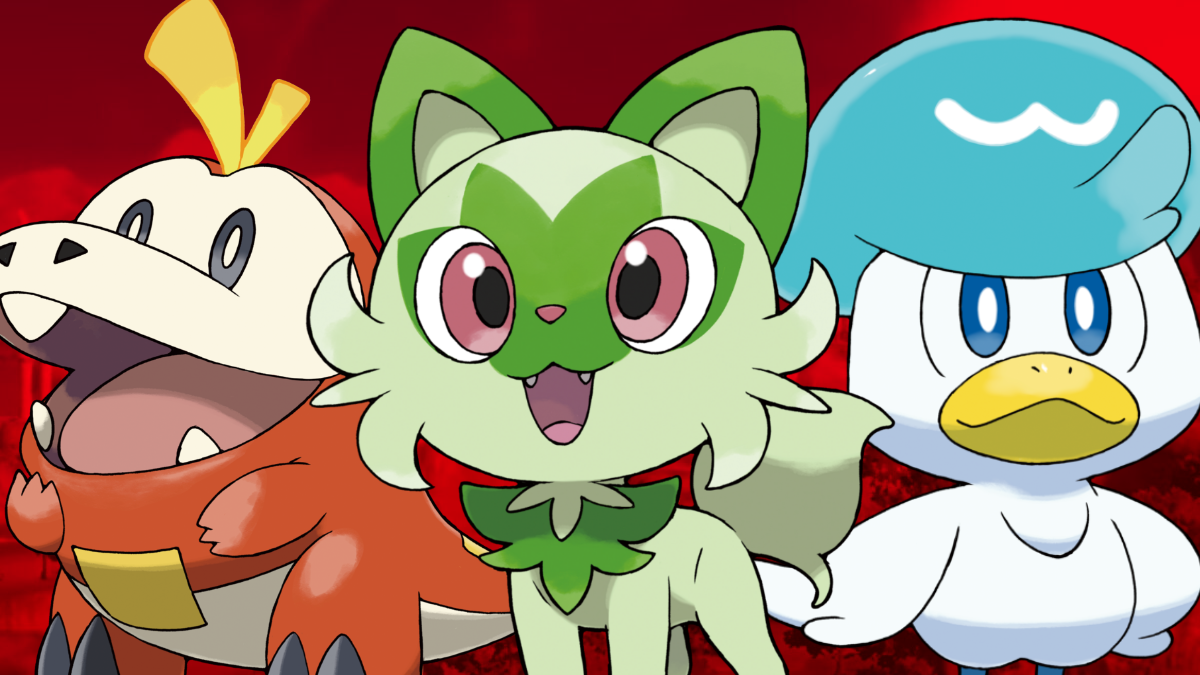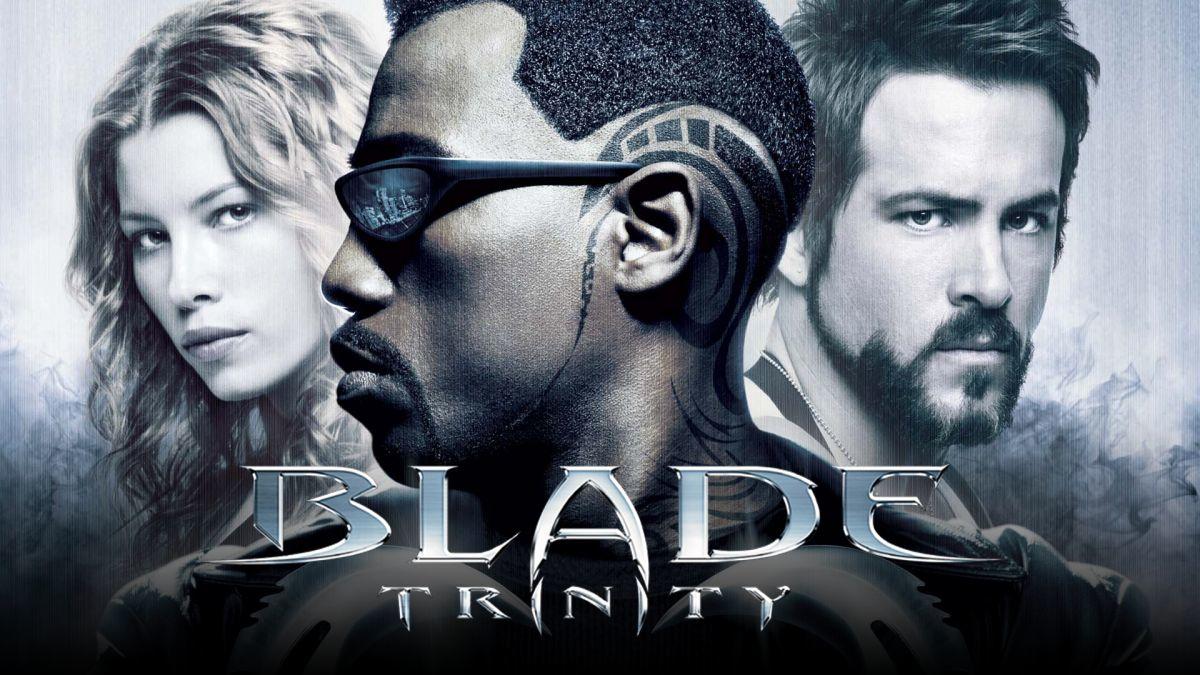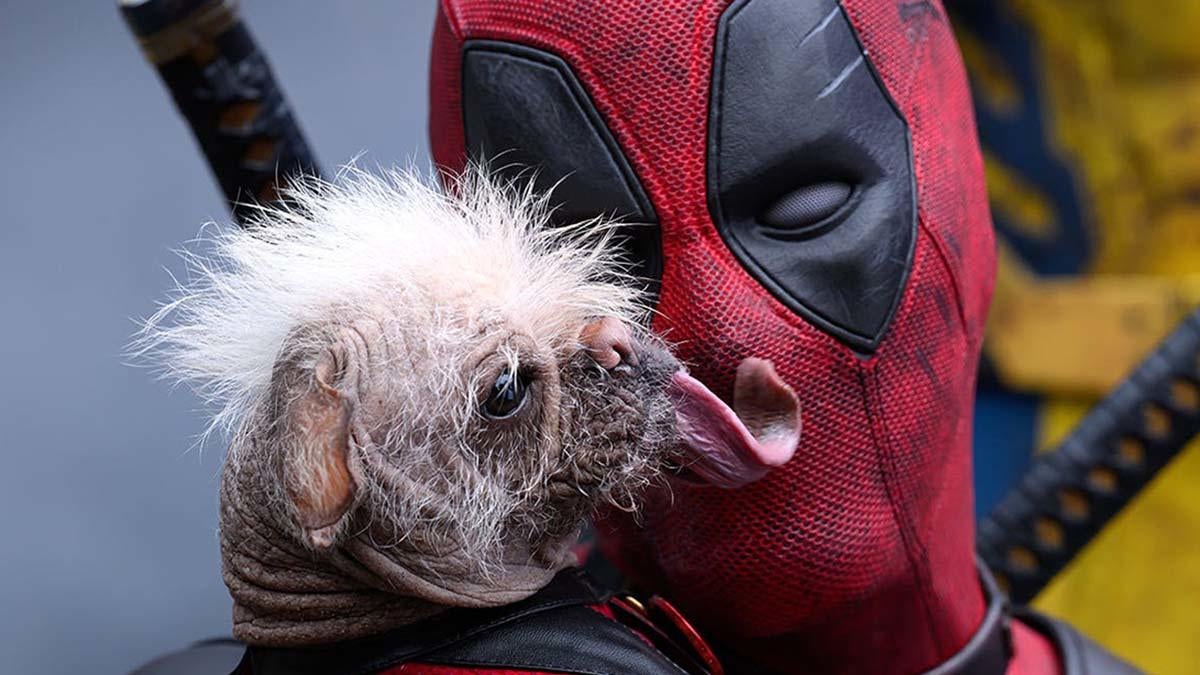Oxenfree II: Night School Studio Founders Discuss the Highly Anticipated Sequel
In July, ComicBook.com spoke to the founders of Night School Studio to commemorate the fifth anniversary of the studio's first game, Oxenfree. During the interview, we touched on the potential for a sequel. Founders Adam Hines and Sean Krankel told us they had discussed the idea and wrestled with pinning down what defines an Oxenfree game. Was it the main character, Alex? The gameplay? The setting? A few weeks later, Night School Studio revealed Oxenfree II: Lost Signals during a Nintendo Direct presentation, suggesting that they'd landed on an answer to their questions about Oxenfree's identity.
"Any character that is going to be a lead in an Oxenfree game is going to be going through their own kind of coming of age moment," Krankel said when we caught up with him and Hines again in October. "And that might be in their 30s. That might be in their teens. That might be wherever, but they're going to be going through a pretty pivotal challenge. And the world of Oxenfree is a really harsh, strange, surreal mirror to hold up to them, to force them to reflect on, and change, and make big decisions in their life at that moment."
Oxenfree II: Lost Signals takes place five years after the events of the original Oxenfree. Players control Riley, who returns to her hometown of Camena and begins to investigate some strange happenings in the area involving a cultish group called Parentage that has taken an interest in the time anomalies first introduced in the original Oxenfree.
Riley most closely fills the protagonist role occupied by Alex in the first game. However, Hines says that one thing distinguishing the sequel from its predecessor is the ensemble cast "dealing with the giant problem of this huge portal above Edwards Island and how that's rippling through and causing all of these people to really either reassess aspects of their lives or deal with an extremely dangerous, immediate problem that Riley needs to come out and help them out with. Riley is definitely the Alex of this game, she has her focus needs and wants, and she's definitely at one point in her life when the game starts and by the end of the game, the player has really determined and defined her feelings about it, what she's going to want to do, how she's going to want to approach that."
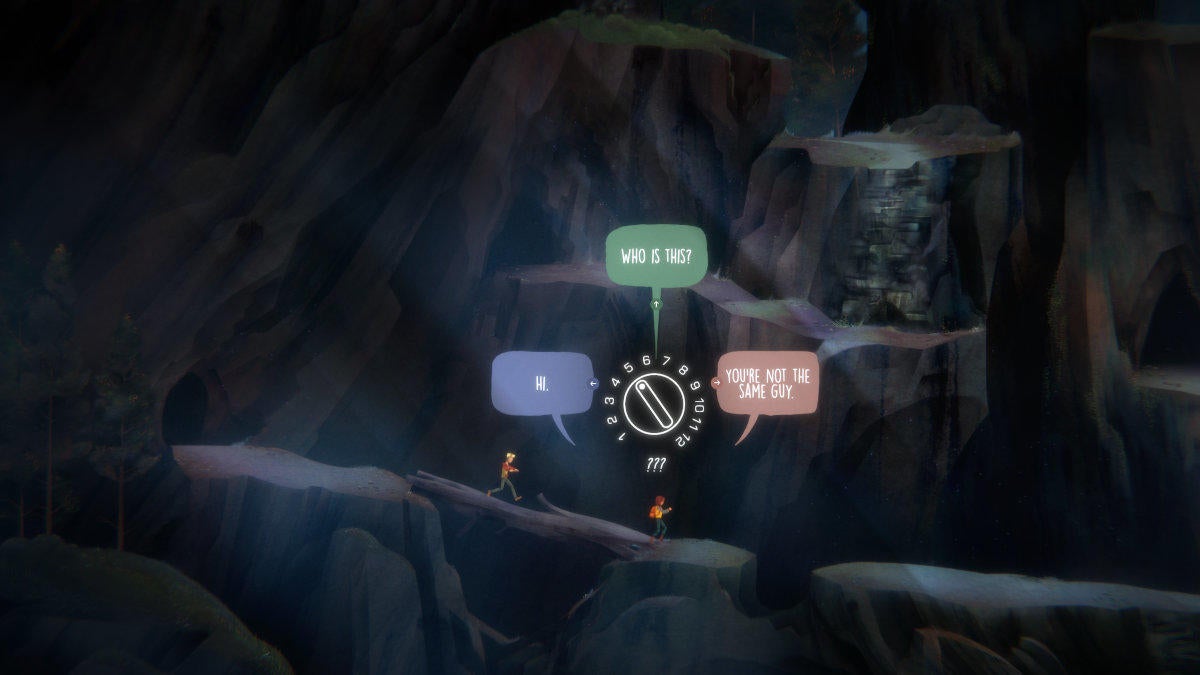
But in addition to that, Hines says, "It was a lot of fun to be able to say, well, what happens if a 70-year-old were to encounter a time portal? -- What if a retiree? What if a little kid? -- and to be able to meet some of these characters in real life, but mostly interact with them on the walkie, and choose kind of how to help them out, and guide them through these things."
The walkie Hines mentions is a new addition to the game. Riley carries a walkie-talkie that allows her to participate in the same signature real-time conversational dialogue from the original Oxenfree, but with the broader cast of characters spread across Camena.
"It feels really simple, [but] it pretty dramatically changes how the player interacts with the world," Krankel explains, "because now I am communicating with people that are physically right there with me, but I also could be getting a call from somebody at that time that I can choose to accept and have that interrupt things and interact with them and their own story, while they're off somewhere else on Camena. Or I can choose to call people and interrupt my own game progression because I want to talk to somebody who's familiar with this location. I know that this person knows these woods well. I bet if I call them, I can learn about something. The walkie was a thing that was a vessel for hints, but it became a vessel to interact with new characters. It became a thing to make things even creepier at times, which you'll see a lot of in the game, and it also became a method to tell new stories."
The walkie helps achieve one of the Night School team's design goals for the sequel. They weren't interested in reinventing the wheel -- even with the addition of the walkie-talkie, the conversations in Lost Signals take place in the same style as conversations in the first game -- but they wanted to open the game up, giving players more agency.
"In Oxenfree 1, there's that one big moment where you can choose whether or not to prioritize Ren or Clarissa, and we wanted a lot more of those," says Hines. "We wanted a lot more times when you have clearly two choices of you can either do this and that might help you out, or you could do this and that might help you out too, and to really put emotional space in either of those. I think when players share their stories about what they did and how they accomplished it, it's going to sound pretty changed."
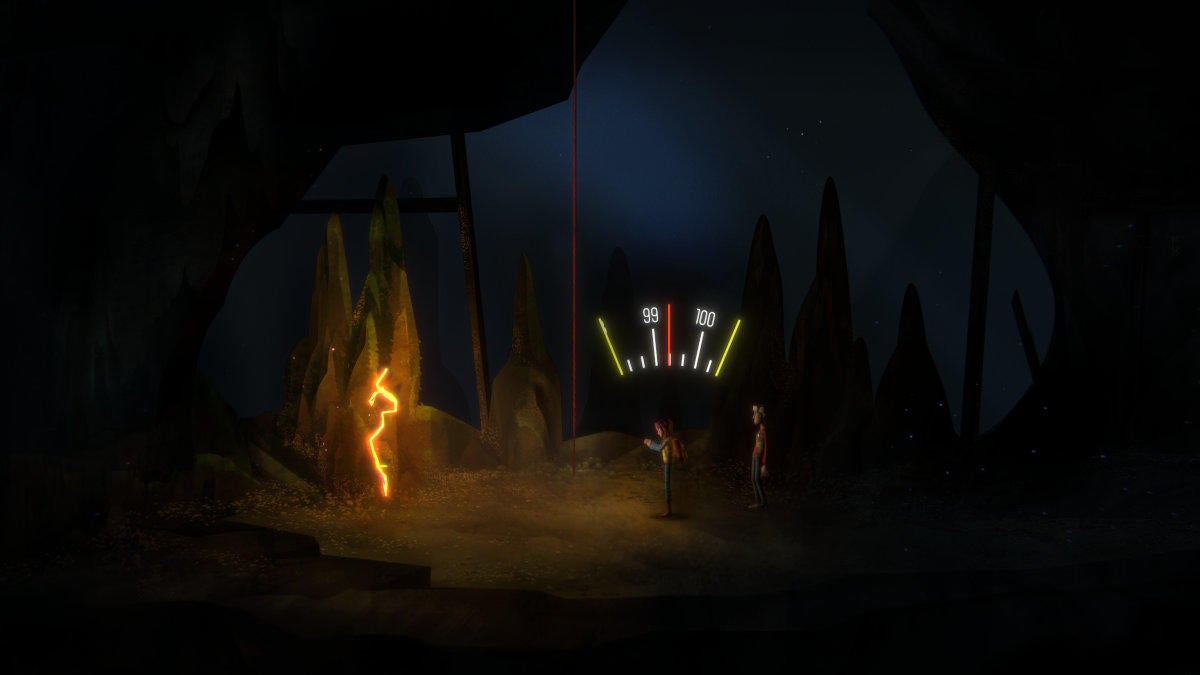
The other significant gameplay addition is time tears, which allow the player to step through the fabric of time and visit different eras. The mechanic is open-ended enough to have a variety of applications.
"Once we landed on the time tears, they became a really nice catchall for a lot of our design aspirations," Krankel says. "Time tears really became this new thing that is organically changing and growing over the events of the night, and that can house anything from a weird puzzle to other characters dealing with their own problems. So, the cast doesn't just exist on Camena in the present day. The cast exists in various timelines as well. And so those time tears, exploring those timelines either through narrative purposes or puzzle purposes, stacks up over the course of the game."
Atmosphere and aesthetic are Oxenfree's other signature. Visually, the Night School founders previously described the game's vibe as nostalgic without being a period piece, accented by a killer score from composer scntfc, who is creating new music for the sequel. They wanted to improve upon that aspect of the game, going as far as to consider taking the series from 2D to 3D graphics. But, as with the gameplay, they decided to improve upon what worked in the first game rather than drastically reinventing anything, ultimately sticking with and refining Oxenfree's 2D graphics.
"The first game, all the backgrounds are totally static," Krankel says. "This game, all the foliage, trees, everything's moving and there's a lot of motion at play. So, if a portal gets opened, trees can get pushed aside and cut in half. The amount of parallax that you see in this one is a lot more. This one is in 4K, the original one was not. Everybody that goes back and plays the first one now that has been working on the second one, they're like, 'Wow, my mind filled in a lot of gaps in this first one that I thought it looked just like the second one, but in reality, the second one is a lot more ambitious, in terms of effects and sort of depth inside of the game.' There were a lot of things on the table, but this is where we landed and we feel really good about it because they do feel like the two games shake hands with each other in a nice way."
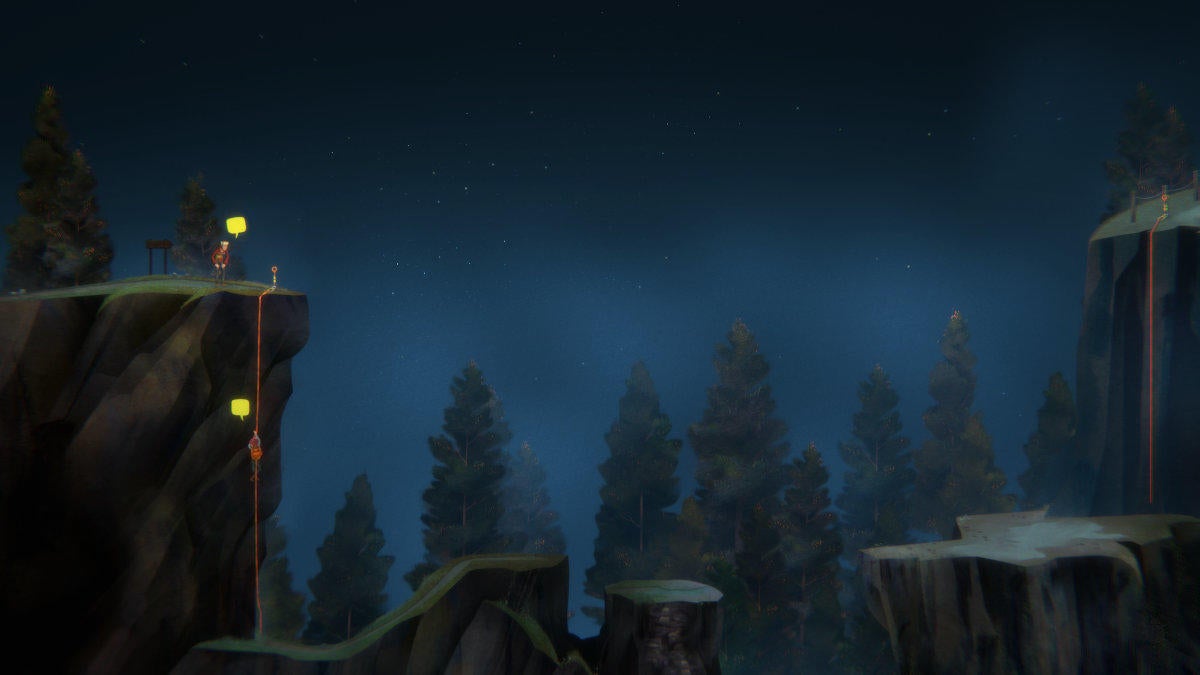
But while they wanted the progression from Oxenfree to Lost Signals to be natural, one thing the sequel does have on the original is a significantly increased sense of scale. Krankel and Hines say the map is about twice as large and the script about twice as long, though giving players more choice over the game's direction means they won't necessarily experience the entirety of that script in a single playthrough. But Night School also didn't want to sacrifice the intimate relationship the first Oxenfree created with its players, previously compared to listening to a favorite record on repeat.
"We want to make sure we do not overly bloat our games," Krankel says. "I don't think there's any version of an Oxenfree game that deserves to be 30 hours long. It's not the right thing, especially because this one's another game that happens with this real sense of urgency. With Oxenfree 1, it was, 'Damn. Before the sun comes up, we got to get the heck off this island.' And this one is, "Damn. What are these Parentage freaks doing? We got to stop them, now. We're not going to take a week off and talk about it or jump on a horse and ride and talk about it. We're going to stay focused.' Adam and I are both parents, so I don't even think we can stand games that are longer than 10 hours anymore. It's definitely our intent to have a single playthrough be really compelling and pretty bite-sized. However, we have definitely layered in a lot more reasons to replay it."
Fans of Night School will know that the company is now the first gaming studio acquired by Netflix as the streaming giant begins to expand into the gaming industry. We couldn't let the founders go without bringing that up and, while it isn't something they're prepared to talk about right now in any detail, they did hint at big things ahead.
"It's a thing generally we would rather not talk about, but I'll give you a short answer, which is that all of our IP has been stuff that we've been trying to explore to get off the ground in other ways, and there's a lot of interest around definitely both Oxenfree and Afterparty," Krankel says. "So for now, nothing's been announced, but we haven't created these things to just stay in game form. Although if they do, we're happy with that too."
What do you think? Let us know in the comments. Oxenfree II: Lost Signals releases on PC, PlayStation 4, PlayStation 5, and Nintendo Switch in 2022.
Quotes in this story were edited and modified for clarity, length, and flow.


